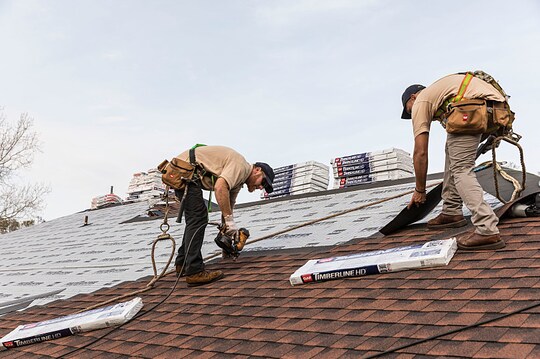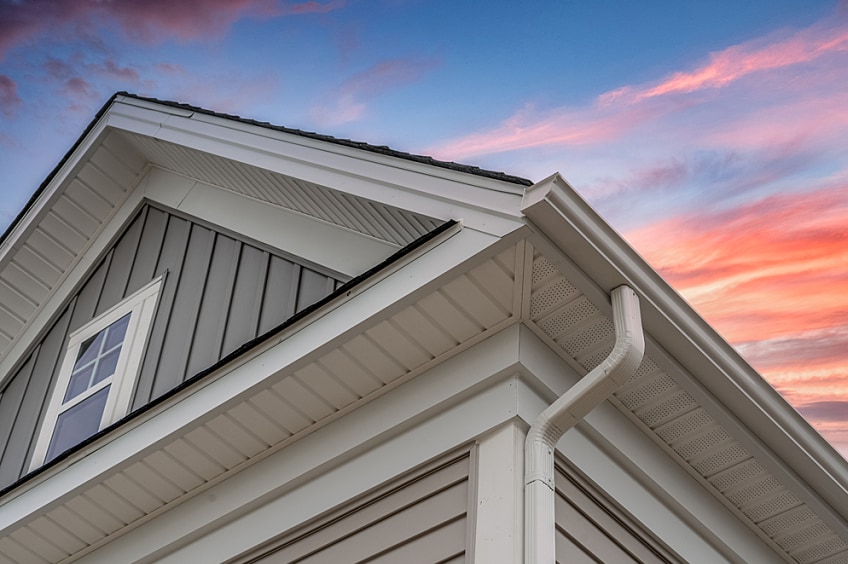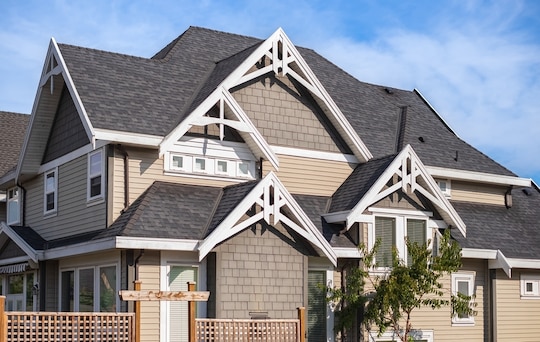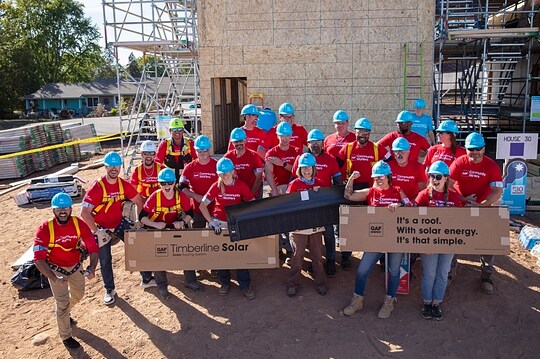
Tout le monde sait qu'il est important de voir les deux côtés de la médaille, mais certains propriétaires ne se rendent pas comptent que leur toit présente lui aussi deux côtés. En plus du système de toiture installé par des professionnels qui protège votre maison des infiltrations d'eau venant de l'extérieur, un système de ventilation du grenier travaille de l'intérieur pour protéger votre maison de la chaleur et de l'humidité.
Qu'est-ce que la ventilation de grenier?
Through a balanced system of intake and exhaust vents, proper ventilation lets your attic—and your entire home—breathe. The word "ventilate" originates from the Latin word meaning "to fan." Essentially, ventilation moves hot air out and cool air in, replacing stale, overheated air with fresh air from outside.
How Does an Attic Ventilation System Work?
Hot air rises naturally, so intake vents located at the bottom of your roof under the soffits allow cool air from outside to enter the attic. This fresh air keeps flowing through the attic before escaping back outside through the hot air exhaust vents, which are located on the top of the roof.
This is a natural process called passive ventilation—one of the most common and effective ways to achieve a balanced attic ventilation system. The amount of exhaust ventilation at or near the roof ridge should never exceed the amount of intake ventilation at or near the roof's soffit.
Why Is Attic Ventilation Important?
If your attic is not properly ventilated, the space can reach more than 160 degrees Fahrenheit, particularly in the summer heat. Those high temperatures risk overloading your home's air conditioning system. Without adequate ventilation, a buildup of heat and moisture in the attic can cause your roof system components and structural supports to degrade over time, potentially reducing their service life. It's crucial to release that excess heat.
During the winter months, the hot, moist air in your attic along with the sun, can heat up your roof and melt the snow that accumulates on it. When that running water then refreezes as temperatures dip, ice dams can form on the colder roof edges under the eaves. These ice dams can also cause water to work its way back up under your shingles, damaging the roof and potentially leading to leaks inside your house.
Here are a couple of more reasons why ventilation is so important.
It Reduces Excess Moisture
As we go about our daily activities, such as cooking, showering, and even breathing, we emit gallons of water into the air. That moisture can make its way up into your attic.
Once that moist air hits a cooler surface, such as the underside of your roof deck, condensation forms. As this condensation accumulates, it can promote mold, mildew, and even wood rot. Your roof's insulation can also absorb humidity, reducing its effectiveness.
Proper ventilation for your attic helps remove this water vapor from your home all year round.
It Cuts Energy Costs
A properly ventilated attic can also help lower energy costs. Improving air circulation in the summer removes hot air, keeping your ductwork and inside air cooler. This allows colder air to flow through your HVAC system, preventing strain on your air conditioning and cutting cooling costs.
Your new roof system is about much more than just its shingles. Full protection both outside and inside your home stems from proper ventilation, which helps reduce damaging moisture, lower the temperature in the attic space and decrease the risk of harmful ice dams. Ensuring your attic is ventilated helps extend the life of your roof, so it can take on any season for years to come.
If you're looking to discuss attic ventilation in your home, you can reach out to a contractor certified by GAF*.
*Contractors enrolled in GAF certification programs are not employees or agents of GAF, and GAF does not control or otherwise supervise these independent businesses. Les entrepreneurs peuvent recevoir des avantages, tels que des points de fidélité et des remises sur les outils de marketing de GAF pour avoir participé au programme et offert des garanties améliorées GAF, qui exigent l'utilisation d'une quantité minimale de produits de la marque.



